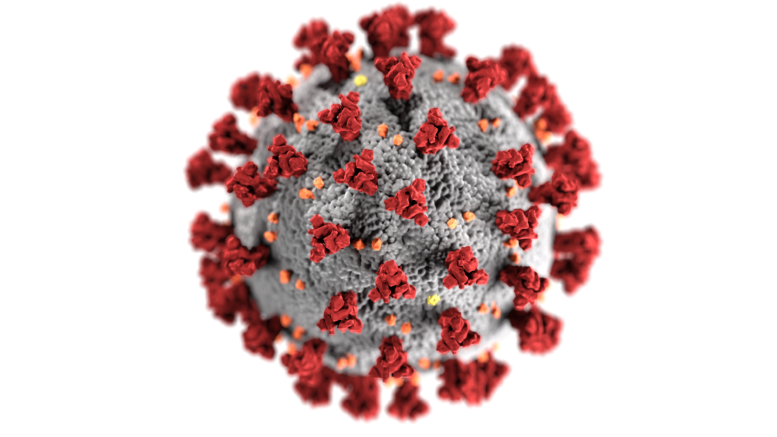Editor’s note: Sacramento County goes backwards on COVID-19 and must limit indoor businesses again
Sacramento County took a significant step backwards Nov. 10 in its hard-won progress in the COVID-19 pandemic—and that means the lockdown will tighten again, with many businesses allowed to only operate outdoors.
The state Department of Public Health put the county back in the most restrictive purple tier after the new daily case rate exceeded the limit of 7 for a second consecutive week.
The numbers out Nov. 10: an average of 9.7 new daily cases per 100,000 people and a 4.1% positive rate on tests.
In recent weeks, the new case rate has risen steadily: 4.4 a day on Oct. 20, 5.7 on Oct. 27 and 7.4 on Nov. 4.
Sacramento County Public Health issued a new public health order that took effect at noon Nov. 13 and that reimposes restrictions for the purple tier, for places with “widespread” risk of coronavirus transmission.
Restaurants—which were allowed under the red tier to offer indoor dining at 25% capacity or 100 people, whichever is less—can only serve outdoors and take-out again. Gyms, movie theaters, museums, other non-essential businesses and places of worship, which were also allowed to reopen indoors with those limits, must also move outdoors. For instance, Crocker Art Museum is closing again Friday, while the California Museum is shutting its doors Thursday, other than virtual exhibits and tours.
Clothing stores and retailers are limited to 25% capacity indoors, down from 50%. Libraries are also restricted to 25% capacity.
But the Downtown Sacramento Partnership, Midtown Association and R Street Partnership sent a joint letter asking the state to allow restaurants, museums and fitness centers to continue to operate indoors. The business groups argue that the county’s spike in cases is due to private gatherings and nursing homes, not restaurants.
“Our restaurants are the backbone of our community and contribute to the vibrancy of our city. They have also been one of the most severely impacted industries by the shut downs of the last nine months,” the letter says.
“As we creep into the winter months, it will be impossible for restaurants to survive purely on outdoor seating as the weather changes.”
There is already an exception under state guidelines: Schools that have already reopened under the red tier do not have to close again. That means Folsom-Cordova Unified elementary schools, which just restarted in-person classes, can stay open. Schools that are still closed must get a waiver or wait for the county to get back to the red tier. And other large Sacramento County school districts that haven’t restarted in-person classes yet for all students will have to wait.
County Public Health had also warned of an “undue economic burden” and a lack of resources to enforce new restrictions in a Nov. 4 request that said the case numbers might be off because of false positive test results. The request was denied by the state, but Sacramento County raised concerns that it’s confusing for residents to bounce back and forth between tiers.
A county must meet the state’s Blueprint for a Safer Economy benchmarks for two weeks in a row and must stay in a tier for at least three weeks. So the soonest Sacramento could return to the red tier is Dec. 1—and that’s only if the numbers turn around quickly.
Public Health reported 484 new cases on Nov. 9, an alarming rate of 31.2. It reported 293 new cases for Nov. 10, an improvement, but not close to what is needed to ease the lockdown again.
The agency reported 496 new cases on Nov. 11 and 327 on Nov. 12, still three times the new case rate required to return to the red tier. Since the pandemic began, there have been 29,837 total cases and 520 deaths in Sacramento County.
“To advance back into the Red Tier 2, Sacramento County needs to have lower daily case rates. The only way to do that is to do what we know works,” Sacramento County Health Officer Olivia Kasirye said in a statement. “We all have a part in this and we must be committed to social distancing measures in public spaces (6ft apart, wear face coverings, wash hands, etc.) and to avoid gathering with non-household members.”
Mayor Darrell Steinberg urged residents to stop unsafe gatherings, even with the holidays coming up. “Here is my challenge to you—make new traditions,” he tweeted.
As our @SacCountyCA public health order changes this Friday November 13 shifting us backwards into purple, I cannot say clearly enough – for God’s sake stop gathering.https://t.co/cWc8vPcwoU pic.twitter.com/AyOurx2iP6
— @mayor_Steinberg (@Mayor_Steinberg) November 10, 2020
Sacramento County Supervisor Susan Peters, on the other hand, blamed the state. “While I know it is difficult to go backwards as a result of the State of California’s decision, thank you nevertheless for your cooperation and continuing efforts to be safe during this public health emergency,” she told constituents in her newsletter.
Supervisor Patrick Kennedy told his constituents that the purple tier restrictions are somewhat looser than when the county was in that tier earlier. “I am keenly aware of the mental, emotional, and financial toll these restrictions bring, and it causes me great personal anguish. However, the sacrifices we make today will hasten the removal of restrictions and, most importantly, save lives in the future,” he wrote in his newsletter.
The county had been in the red tier (for “substantial” risk of the virus spreading) since Sept. 29, after being stalled for a month in the purple tier. Officials mounted a high-profile campaign to reach the less restrictive orange tier (for “moderate” risk) by Halloween by reducing the new case rate to less than 4 a day.
But it went in the opposite direction.
On Nov. 3, county public health officials told the Board of Supervisors that private gatherings are a main cause of the surge and that they plan a public relations campaign before Thanksgiving, urging residents to avoid having extended family visit or holding large indoor dinners.
The county is also considering fines against businesses that repeatedly violate safety rules.
UPDATE: And Public Health is working on an ordinance to present to supervisors to strengthen enforcement. It could be debated as soon as Tuesday, but as an urgency ordinance would require approval from four of the five supervisors to take effect immediately. And Supervisor Sue Frost, and to a lesser extent, Peters, have raised concerns about the impact on businesses of stricter enforcement.
Even with the spike in new cases, there’s growing COVID fatigue and rising vocal resistance to continuing the lockdown. Angry critics are now calling into every supervisors’ meeting to demand an end to the state of emergency.
Other counties in Northern California are also seeing increases in cases. El Dorado and Placer counties are moving back into the red tier from orange.
Besides Sacramento, San Diego and Stanislaus counties also backtracked from red to purple. Statewide, there had been progress since the summer; the state was the most open on Oct. 27, but it has regressed in recent weeks. As of Tuesday, 13 counties were in the purple tier, 22 in red, 17 in orange and 6 in the yellow minimal tier.
State Health and Human Services Secretary Mark Ghaly told reporters Tuesday that officials are closely watching the case increases. He said that COVID-19 hospitalizations statewide have increased by 32% over the last 14 days to 3,083 and ICU cases by 30% to 859.
Ghaly acknowledged that there’s not only COVID fatigue, but resentment. “We know that this is hard,” he said. But residents must still do more to stay safe and get the pandemic under control, he said.
Asked about businesses having to close again, Ghaly said reducing cases also protects the economy.
The situation is even worse in other states. Even before what experts are predicting will be a dark and deadly winter, new COVID-19 cases nationwide are hitting all-time records, with more than 100,000 new daily cases five days in a row and surging hospitalizations. The total number of cases has passed an unthinkable 10 million.






We really need to start thinking about boycotting the restaurants of these organizations that are demanding the right to stay open and put the rest of us at risk for COVID-19. Apparently, they don’t care if we live or die as long as there are enough remaining patrons for their indoor dining. Truly appalling, they deserve no support from this community.